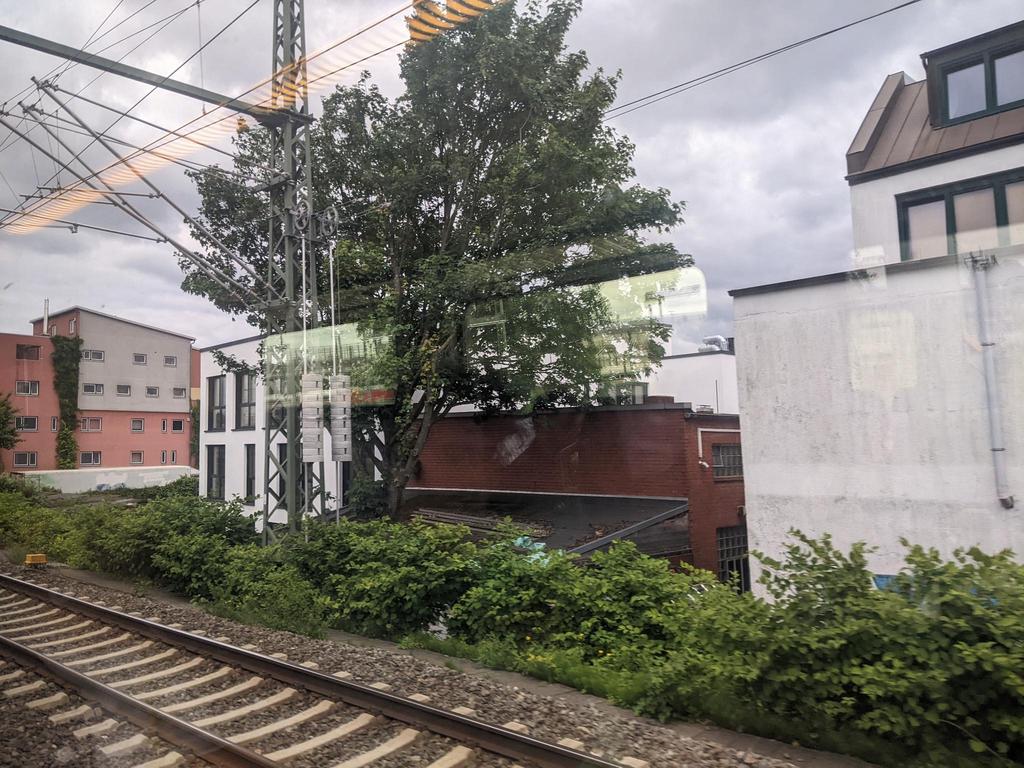Boston-Providence
The Providence Line is already built to high standards, allowing high average speeds. The issue there is track sharing with frequent commuter rail service (every 15 minutes at rush hour today; we propose every 7.5 minutes on the inner section), for which the primary solution is better timetabling and electrification of commuter rail service. One minor investment in triple-tracking two miles between Readville and Route 128 is required, to allow timed overtakes between fast intercity trains and slow commuter trains.
Providence-New Haven
There is little commuter traffic on this section. In Rhode Island the tracks are built to high standards, but in Connecticut they're very curvy and some have grade crossings. Thankfully, I-95 is straight enough and there is less development next to it than elsewhere on the corridor, allowing for a bypass. The bypass would be 120 km (75 mi) long, cost $5 billion, and require taking about 300 properties at current draft; with the bypass built, existing commuter rail traffic on Shore Line East would stay on the old line and get higher frequency, no longer having to share tracks with faster intercity trains.
New Haven-New York
The New Haven Line runs a peak traffic of 20 trains per hour today, which will only grow larger when Penn Station Access (PSA) opens in 2027. The line is so long that commuter trains run express and local patterns, as a result of which, there are three speed classes - local commuter, express commuter, and intercity - on a line that only has four tracks. As a result, timetabling on this section is delicate, and ground-up coordination between Amtrak and Metro-North is required. Even with such coordination, and with some capacity investments (namely, grade-separating the junction in New Rochelle), this section would remain the slowest on the corridor, as it is curvy and there is dense suburban development hemming in the tracks. Four bridge replacements are currently planned by Connecticut, of which the most important is the Cos Cob Bridge; here we propose ways to use more modern technical standards to reduce costs.
New York Penn Station
We do not propose any major investment into Penn Station, beyond the already under construction Hudson River Tunnels built as part of the Gateway project. The station's 21 tracks and 11 platforms are sufficient for the system, which currently has two western approach tracks under the Hudson (to be upgraded to four with the HRT) and four under the East River. We provide a simulation to show how this can be done on the NEC, obviating plans by Amtrak to reconstruct the concourse level for $7 billion (Penn Reconstruction) and condemn a Manhattan block to add new tracks for $17 billion (Penn Expansion).
New Jersey
In New Jersey, the NEC is built to high standards, but a few difficult sections exist and are expensive to improve. As on the New Haven Line, there are four tracks for three speed classes of train, but unlike in Connecticut, there are six-track bypass sections, and the total length of required track sharing is less. Timetable coordination is still required but is less difficult. Physical infrastructure construction is required to reduce conflict, including three projects that NJ Transit has already applied for federal funding for: Hunter Flyover, the Mid-Line Loop, and Portal Bridge South; to reduce costs, Portal South should use the $800 million movable mid-level option and not the fixed $3 billion high-level alternative.
Trenton-PA/Delaware Border
Timetabling on this section is straightforward, as the line has four tracks, and SEPTA commuter trains do not run express service. The only significant timetable conflict comes from flat junctions near 30th Street Station. For this, we recommend rebuilding Frankford Junction, where a tight S-curve through an industrial area slows down the trains; the same project can bundle a flyover to remove train conflicts.
Delaware
Little work is required in Delaware. Some timetable coordination is required as there is a short section of shared track between Amtrak and SEPTA, and some work lengthening the platforms at Wilmington is required to enable longer intercity trains to serve the station.
Maryland-North Baltimore
In Maryland north of Baltimore, the NEC is built to high standards, but minor work is required to realign some curves within the right-of-way, replacing a succession of curves with different radii with a single longer curve. While Amtrak has prioritized replacing the movable bridges on this section, with the Susquehanna bridge already funded for four-tracking, this is not needed for speed or capacity. The commuter trains on this section make so few stops that they can be scheduled between the intercity trains.
Baltimore-Washington
The high standards of the NEC in Maryland continue south of Baltimore. The one glaring exception is the western approach to Baltimore, built to low standards with sharp curves and poor waterproofing; as a result, a $6 billion replacement tunnel, the Frederick Douglass Tunnel, has been fully funded. Beyond this, there is heavy MARC commuter rail traffic, peaking at 3-4 trains per hour, and as a result of past Amtrak-MARC conflict, MARC runs diesel trains under the NEC catenary. To allow for smoother timetabling and speed up both services, it is required to replace MARC's fleet with modern electric trains. A $600 million BWI Fourth Track project is also required to allow for overtakes at BWI.
